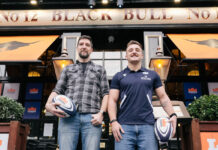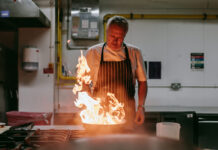When the doors open at Sub Club on a Saturday night, it’s possible that the parents of some customers in attendance will have met at the very same club night eighteen years prior, such is the longevity of the venue’s residencies.

Through what is claimed to be the longest running weekly house and techno night in the world, Saturday night fixture Subculture has seen DJs Harri and Domenic push out underground house music at the Glasgow club since April 1994.
And it’s this consistency that’s at the heart of Sub Club’s enduring success – and one of the factors which impressed SLTN Awards judges as the club picked up the SLTN Nightclub of the Year award, in association with Keglevich, last November.
Venue owner Michael Grieve, who purchased the business in a management buyout with Paul Crawford (who has since left the business) in 2002, and who met his own wife at a Sub Club night, reckons that “the Subbie’s” approach to residencies has been a big factor in its longevity and success.
“I think the significant thing for me about the club that has allowed it to endure is we concentrated on building nights around resident DJs,” said Grieve.
The Sub Club first opened its doors back in 1987 and it’s not surprising that over that length of time the venue has had to navigate some choppy water.
Grieve said the 1990s in particular were “difficult times” for the club – “a lot of challenges but we steadily built the club up”.
However arguably the biggest challenge to the venue’s future came in November 1999 when a building next door to the Jamaica Street outlet caught fire, resulting in a three-year closure.
“During that period of time we operated Sub Club nights in venues around Glasgow,” said Grieve – although he admits that had the team known it would take three years to get back into the venue from the offset that may not have happened.
However, with the residencies still going strong despite the absence of a venue, the Sub Club team had a solid foundation to build on when they returned home and so set about creating a nightclub with sound quality at the top of the agenda.
“We installed easily the best sound system in Scotland,” said Grieve.
“Not just in terms of components but in terms of design.”
The Sub Club’s sound system is well-respected in the industry, but for the novice clubber the attention grabber may be found underfoot.
In 2006, Grieve and the team looked to take the Sub Club sound up a step, opting to install a Bodysonic dancefloor, further heightening the music experience.
Situated beneath panels on the dancefloor, the Bodysonic technology consists of a series of transducers which act as ultra-low frequency drivers, emitting sound inaudible to the human ear, but felt instead as a vibration coming up through a clubber’s feet.
The Sub Club’s bread and butter may be brilliant sound in a Glasgow basement, but the club has also gained a reputation for its involvement in events above ground too.
Starting in the ’90s, Sub Club became involved in programming for dance tents at major music festivals, including T in the Park, and the club’s arts-focused Sub Hub venture is set to return for its second year with a range of workshops and events this autumn.
Sub Club sounds have also emerged through the club’s own label Nautilus Rising –an allusion to the submarine piloted by Captain Nemo in Jules Verne’s Twenty Thousand Leagues Under the Sea – launched last year.
The ever expanding portfolio of projects amid decades of consistency is somewhat mirrored in the makeup of the club’s clientele, which Grieve described as “new faces, but the same people”.
“[We still attract] the same type of person we’ve always attracted,” said Grieve.
“A more kind of bohemian cultured type of person rather than high fashion.”
Staying as Sub Club without standing still will be a focus for the venue this summer too. A two-week refurb of the club is scheduled to begin on June 5, which Grieve said will bring big changes, although the club’s offer will be “fundamentally the same”.



















